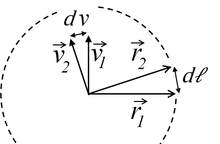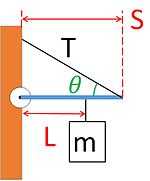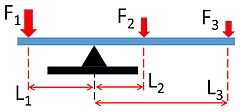Quizbank/College Physics/I T3study
< Quizbank < College PhysicsTrigPhys_I_T3_Study
If you are reading this as a Wikiversity page, proper pagebreaks should result if printed using your browser's print option. On Chrome, Explorer, and Firefox, this option is available in the upper right hand corner of your screen. But, pagebreaks do not render properly if you use "Printable version" on Wikiversity's Print/export option on the left-hand sidebar.
- This document contains either a study guide OR pairs of exams taken from the same exam bank
- If two exams have the same s-number, then v1 and v2 have the same questions, presented in different (random) order.
- Exams with different s-numbers have different questions and may not have the same difficulty.
- Click items in the table of contents and appropriate page should be reached. This feature should allow you to print only those pages that you need.
- At the end of this document
- Attribution for the quizzes identifies where the questions were obtained
- Study guide links reading materials and/or relevant equations.
TrigPhys_I_T3_Study-v1s1
1.

Is  valid for uniform circular motion?
valid for uniform circular motion?
- ___ a) Yes
- ___ b) No
2.

Is  valid for uniform circular motion?
valid for uniform circular motion?
- ___ a) Yes
- ___ b) No
3.

Is  valid for uniform circular motion?
valid for uniform circular motion?
- ___ a) Yes
- ___ b) No
4.

Is  valid for uniform circular motion?
valid for uniform circular motion?
- ___ a) Yes
- ___ b) No
5.

Is  valid for uniform circular motion?
valid for uniform circular motion?
- ___ a) Yes
- ___ b) No
6.

Is  valid for uniform circular motion?
valid for uniform circular motion?
- ___ a) Yes
- ___ b) No
7.

Is  valid for uniform circular motion?
valid for uniform circular motion?
- ___ a) Yes
- ___ b) No
8.

Is  valid for uniform circular motion?
valid for uniform circular motion?
- ___ a) Yes
- ___ b) No
9.

Is  valid for uniform circular motion?
valid for uniform circular motion?
- ___ a) Yes
- ___ b) No
10.

Is  valid for uniform circular motion?
valid for uniform circular motion?
- ___ a) Yes
- ___ b) No
11.

Is  valid for uniform circular motion?
valid for uniform circular motion?
- ___ a) Yes
- ___ b) No
12.

Is  valid for uniform circular motion?
valid for uniform circular motion?
- ___ a) Yes
- ___ b) No
13.

Is  valid for uniform circular motion?
valid for uniform circular motion?
- ___ a) Yes
- ___ b) No
14.

Is  valid for uniform circular motion?
valid for uniform circular motion?
- ___ a) Yes
- ___ b) No
15. If the initial velocity after leaving the spring is 7.30 m/s, how high does it reach before coming to rest?

- ___ a) 2.35 m
- ___ b) 2.47 m
- ___ c) 2.59 m
- ___ d) 2.72 m
- ___ e) 2.85 m
16. The mass of the cart is 4.0kg, and the spring constant is 6611N/m. If the initial compression of the spring is 2.00m, how high does it reach before coming to rest?

- ___ a) 3.37E+02 m
- ___ b) 3.54E+02 m
- ___ c) 3.72E+02 m
- ___ d) 3.90E+02 m
- ___ e) 4.10E+02 m
17. What is the highest point the cart reaches if the speed was 1.6m/s, when the cart was situated at a height of 3.5m?,

- ___ a) 3.33 m
- ___ b) 3.50 m
- ___ c) 3.68 m
- ___ d) 3.86 m
- ___ e) 4.05 m
18. The spring constant is 710N/m, and the initial compression is 0.15m. What is the mass if the cart reaches a height of 2.62m, before coming to rest?

- ___ a) 0.282 kg
- ___ b) 0.296 kg
- ___ c) 0.311 kg
- ___ d) 0.327 kg
- ___ e) 0.343 kg
19. The cart has a mass of 40.30kg. It is moving at a speed of 3.40m/s, when it is at a height of 3.59m. If the spring constant was 539N/m, what was the initial compression?

- ___ a) 2.47 m
- ___ b) 2.65 m
- ___ c) 2.83 m
- ___ d) 3.03 m
- ___ e) 3.24 m
20. You are riding a bicycle on a flat road. Assume no friction or air drag, and that you are coasting. Your speed is 4.9m/s, when you encounter a hill of height 1.14m. What is your speed at the top of the hill?
- ___ a) 1.084 m/s
- ___ b) 1.149 m/s
- ___ c) 1.218 m/s
- ___ d) 1.291 m/s
- ___ e) 1.368 m/s
21. On object of mass 2.2 kg that is moving at a velocity of 28m/s collides with a stationary object of mass 18.48 kg. What is the final velocity if they stick? (Assume no external friction.)
- ___a) 1.72m/s.
- ___b) 2.07m/s.
- ___c) 2.48m/s.
- ___d) 2.98m/s.
- ___e) 3.57m/s.
22. A car of mass 856 kg is driving on an icy road at a speed of 19 m/s, when it collides with a stationary truck. After the collision they stick and move at a speed of 4.7 m/s. What was the mass of the truck?
- ___a) 1507 kg
- ___b) 1809 kg
- ___c) 2170 kg
- ___d) 2604 kg
- ___e) 3125 kg
23.

A 169 gm bullet strikes a ballistic pendulum of mass 2.45 kg (before the bullet struck). After impact, the pendulum rises by 65 cm. What was the speed of the bullet?
- ___a) 55 m/s.
- ___b) 59 m/s.
- ___c) 63 m/s.
- ___d) 68 m/s.
- ___e) 73 m/s.
24.

A massless bar of length, S = 8.5m is attached to a wall by a frictionless hinge (shown as a circle). The bar his held horizontal by a string that makes and angle θ = 33.6 degrees above the horizontal. An object of mass, M = 7.3kg is suspended at a length, L = 5.7m from the wall. What is the tension, T, in the string?
- ___a) 4.34E+01 N
- ___b) 5.47E+01 N
- ___c) 6.89E+01 N
- ___d) 8.67E+01 N
- ___e) 1.09E+02 N
25.

In the figure shown, L1 = 5.4m, L2 = 3.3m and L3 = 7.4m. What is F1 if F2 =7.5N and F3 =5.4N?
- ___a) 8.16E+00 N
- ___b) 9.89E+00 N
- ___c) 1.20E+01 N
- ___d) 1.45E+01 N
- ___e) 1.76E+01 N
26.

A massless bar of length, S = 7.6m is attached to a wall by a frictionless hinge (shown as a circle). The bar his held horizontal by a string that makes and angle θ = 36.8 degrees above the horizontal. An object of mass, M = 7.3kg is suspended at a length, L = 4.9m from the wall. What is the x (horizontal) component of the force exerted by the wall on the horizontal bar?
- ___a) 4.20E+01 N
- ___b) 5.09E+01 N
- ___c) 6.17E+01 N
- ___d) 7.47E+01 N
- ___e) 9.05E+01 N
27.

In the figure shown, L1 = 6.4m, L2 = 3.4m and L3 = 7.1m. What is F2 if F1 =0.87N and F3 =0.1N?
- ___a) 1.43E+00 N
- ___b) 1.73E+00 N
- ___c) 2.10E+00 N
- ___d) 2.54E+00 N
- ___e) 3.08E+00 N
28.

A massless bar of length, S = 7.7m is attached to a wall by a frictionless hinge (shown as a circle). The bar his held horizontal by a string that makes and angle θ = 28.6 degrees above the horizontal. An object of mass, M = 6.2kg is suspended at a length, L =4.2m from the wall. What is the y (vertical) component of the force exerted by the wall on the horizontal bar?
- ___a) 2.28E+01 N
- ___b) 2.76E+01 N
- ___c) 3.35E+01 N
- ___d) 4.05E+01 N
- ___e) 4.91E+01 N
Key to TrigPhys_I_T3_Study-v1s1
1.

Is  valid for uniform circular motion?
valid for uniform circular motion?
- + a) Yes
- - b) No
2.

Is  valid for uniform circular motion?
valid for uniform circular motion?
- + a) Yes
- - b) No
3.

Is  valid for uniform circular motion?
valid for uniform circular motion?
- + a) Yes
- - b) No
4.

Is  valid for uniform circular motion?
valid for uniform circular motion?
- + a) Yes
- - b) No
5.

Is  valid for uniform circular motion?
valid for uniform circular motion?
- + a) Yes
- - b) No
6.

Is  valid for uniform circular motion?
valid for uniform circular motion?
- + a) Yes
- - b) No
7.

Is  valid for uniform circular motion?
valid for uniform circular motion?
- + a) Yes
- - b) No
8.

Is  valid for uniform circular motion?
valid for uniform circular motion?
- - a) Yes
- + b) No
9.

Is  valid for uniform circular motion?
valid for uniform circular motion?
- - a) Yes
- + b) No
10.

Is  valid for uniform circular motion?
valid for uniform circular motion?
- - a) Yes
- + b) No
11.

Is  valid for uniform circular motion?
valid for uniform circular motion?
- - a) Yes
- + b) No
12.

Is  valid for uniform circular motion?
valid for uniform circular motion?
- - a) Yes
- + b) No
13.

Is  valid for uniform circular motion?
valid for uniform circular motion?
- - a) Yes
- + b) No
14.

Is  valid for uniform circular motion?
valid for uniform circular motion?
- - a) Yes
- + b) No
15. If the initial velocity after leaving the spring is 7.30 m/s, how high does it reach before coming to rest?

- - a) 2.35 m
- - b) 2.47 m
- - c) 2.59 m
- + d) 2.72 m
- - e) 2.85 m
16. The mass of the cart is 4.0kg, and the spring constant is 6611N/m. If the initial compression of the spring is 2.00m, how high does it reach before coming to rest?

- + a) 3.37E+02 m
- - b) 3.54E+02 m
- - c) 3.72E+02 m
- - d) 3.90E+02 m
- - e) 4.10E+02 m
17. What is the highest point the cart reaches if the speed was 1.6m/s, when the cart was situated at a height of 3.5m?,

- - a) 3.33 m
- + b) 3.50 m
- - c) 3.68 m
- - d) 3.86 m
- - e) 4.05 m
18. The spring constant is 710N/m, and the initial compression is 0.15m. What is the mass if the cart reaches a height of 2.62m, before coming to rest?

- - a) 0.282 kg
- - b) 0.296 kg
- + c) 0.311 kg
- - d) 0.327 kg
- - e) 0.343 kg
19. The cart has a mass of 40.30kg. It is moving at a speed of 3.40m/s, when it is at a height of 3.59m. If the spring constant was 539N/m, what was the initial compression?

- + a) 2.47 m
- - b) 2.65 m
- - c) 2.83 m
- - d) 3.03 m
- - e) 3.24 m
20. You are riding a bicycle on a flat road. Assume no friction or air drag, and that you are coasting. Your speed is 4.9m/s, when you encounter a hill of height 1.14m. What is your speed at the top of the hill?
- - a) 1.084 m/s
- - b) 1.149 m/s
- - c) 1.218 m/s
- + d) 1.291 m/s
- - e) 1.368 m/s
21. On object of mass 2.2 kg that is moving at a velocity of 28m/s collides with a stationary object of mass 18.48 kg. What is the final velocity if they stick? (Assume no external friction.)
- -a) 1.72m/s.
- -b) 2.07m/s.
- -c) 2.48m/s.
- +d) 2.98m/s.
- -e) 3.57m/s.
22. A car of mass 856 kg is driving on an icy road at a speed of 19 m/s, when it collides with a stationary truck. After the collision they stick and move at a speed of 4.7 m/s. What was the mass of the truck?
- -a) 1507 kg
- -b) 1809 kg
- -c) 2170 kg
- +d) 2604 kg
- -e) 3125 kg
23.

A 169 gm bullet strikes a ballistic pendulum of mass 2.45 kg (before the bullet struck). After impact, the pendulum rises by 65 cm. What was the speed of the bullet?
- +a) 55 m/s.
- -b) 59 m/s.
- -c) 63 m/s.
- -d) 68 m/s.
- -e) 73 m/s.
24.

A massless bar of length, S = 8.5m is attached to a wall by a frictionless hinge (shown as a circle). The bar his held horizontal by a string that makes and angle θ = 33.6 degrees above the horizontal. An object of mass, M = 7.3kg is suspended at a length, L = 5.7m from the wall. What is the tension, T, in the string?
- -a) 4.34E+01 N
- -b) 5.47E+01 N
- -c) 6.89E+01 N
- +d) 8.67E+01 N
- -e) 1.09E+02 N
25.

In the figure shown, L1 = 5.4m, L2 = 3.3m and L3 = 7.4m. What is F1 if F2 =7.5N and F3 =5.4N?
- -a) 8.16E+00 N
- -b) 9.89E+00 N
- +c) 1.20E+01 N
- -d) 1.45E+01 N
- -e) 1.76E+01 N
26.

A massless bar of length, S = 7.6m is attached to a wall by a frictionless hinge (shown as a circle). The bar his held horizontal by a string that makes and angle θ = 36.8 degrees above the horizontal. An object of mass, M = 7.3kg is suspended at a length, L = 4.9m from the wall. What is the x (horizontal) component of the force exerted by the wall on the horizontal bar?
- -a) 4.20E+01 N
- -b) 5.09E+01 N
- +c) 6.17E+01 N
- -d) 7.47E+01 N
- -e) 9.05E+01 N
27.

In the figure shown, L1 = 6.4m, L2 = 3.4m and L3 = 7.1m. What is F2 if F1 =0.87N and F3 =0.1N?
- +a) 1.43E+00 N
- -b) 1.73E+00 N
- -c) 2.10E+00 N
- -d) 2.54E+00 N
- -e) 3.08E+00 N
28.

A massless bar of length, S = 7.7m is attached to a wall by a frictionless hinge (shown as a circle). The bar his held horizontal by a string that makes and angle θ = 28.6 degrees above the horizontal. An object of mass, M = 6.2kg is suspended at a length, L =4.2m from the wall. What is the y (vertical) component of the force exerted by the wall on the horizontal bar?
- -a) 2.28E+01 N
- +b) 2.76E+01 N
- -c) 3.35E+01 N
- -d) 4.05E+01 N
- -e) 4.91E+01 N
- Attribution (for quiz questions) under CC-by-SA license
- https://en.wikiversity.org/w/index.php?title=Physics_equations/06-Uniform_Circular_Motion_and_Gravitation/Q:derive&oldid=1411691
- https://en.wikiversity.org/w/index.php?title=Physics_equations/07-Work_and_Energy/Q:cart1&oldid=1380215
- https://en.wikiversity.org/w/index.php?title=Physics_equations/07-Work_and_Energy/Q:cart2&oldid=1380821
- http://en.wikiversity.org/w/index.php?title=Physics_equations/18-Electric_charge_and_field/Q:findE&oldid=1378605
- Study guide
- Physics_equations#Uniform_Circular_Motion_and_Gravitation
- http://en.wikiversity.org/wiki/Physics_equations/Sheet/All_chapters
- https://en.wikiversity.org/wiki/Physics_equations/Sheet/All_chapters